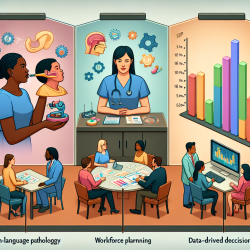Introduction
As a Special Education Director, I am always on the lookout for research that can enhance our understanding of adolescent mental health, particularly in areas like non-suicidal self-injury (NSSI). The BRIDGES Longitudinal Study offers a wealth of insights into the clinical trajectories of adolescents with and without a history of NSSI. This blog aims to distill key findings from the study and suggest ways practitioners can apply these insights to improve their practice.
The BRIDGES Study: A Quick Overview
The BRIDGES (BRain Imaging Development of Girls’ Emotion and Self) study, conducted by researchers at the University of Minnesota, provides a comprehensive look at the clinical and neurobiological data related to NSSI in adolescents. The study followed 164 adolescents assigned female at birth, aged 12-16, over several years to understand the clinical trajectories associated with NSSI, depression, and suicide risk.
Key Findings and Implications
1. Decreasing Severity Over Time
One of the study's significant findings is the trend of decreasing severity of psychopathology over time. This suggests that early interventions can be effective in reducing the severity of mental health issues in adolescents. Practitioners should consider implementing early screening and intervention programs to address these issues before they escalate.
2. The Importance of Longitudinal Data
The study underscores the value of longitudinal data in understanding the developmental trajectories of NSSI and related mental health issues. By tracking changes over time, researchers can identify patterns and factors that contribute to improvements or deteriorations in mental health. Practitioners are encouraged to adopt a long-term perspective when assessing and treating adolescents with NSSI.
3. Age of Onset Insights
The data reveals that the mean age for the onset of NSSI thoughts is 11.6 years, with engagement starting at around 12.0 years. This highlights the need for early mental health assessments in late childhood and early adolescence. Schools and mental health providers should incorporate regular mental health check-ups for students in this age group.
Encouraging Further Research
The BRIDGES study provides a rich dataset that is publicly available for further research. Practitioners and researchers are encouraged to explore this dataset to formulate new questions and hypotheses. Areas such as the neurobiological mechanisms underlying NSSI and effective intervention strategies are ripe for further exploration.
Conclusion
The BRIDGES Longitudinal Study offers valuable insights into the clinical trajectories of adolescents with NSSI. By applying these findings, practitioners can improve their approaches to adolescent mental health care. For those interested in delving deeper into the study, the original research paper is available for further reading.
To read the original research paper, please follow this link: Clinical Trajectories in Adolescents with and without a History of Non-Suicidal Self-Injury: The BRIDGES Longitudinal Study.










